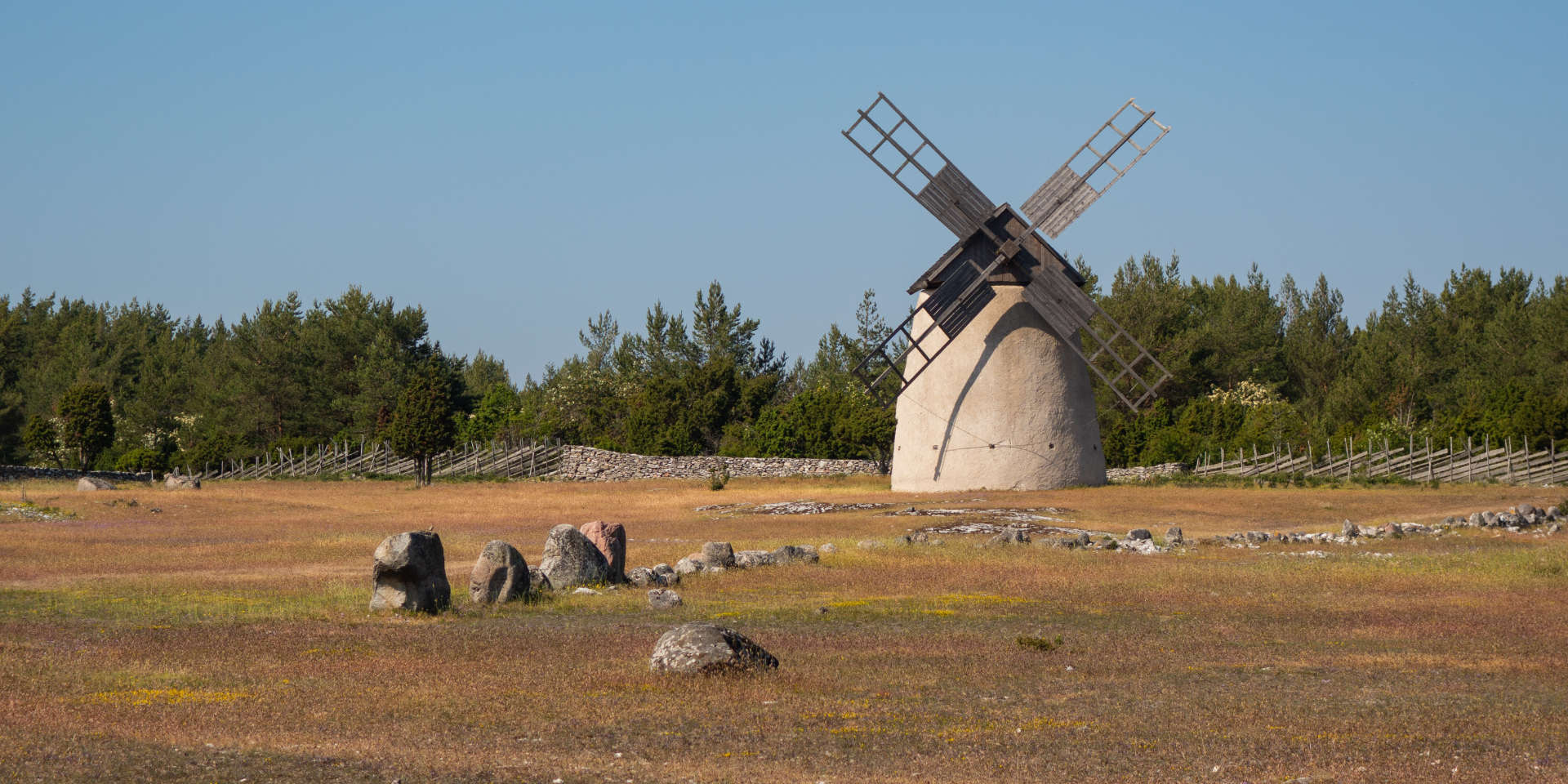

Gotlands Län
The Swedish Sunshine Island
The province of Gotlands Län is located about 100 kilometres off the east coast of Sweden and consists of the island of Gotland including the surrounding neighbouring islands. Gotland is the largest Swedish island and is often referred to in Sweden as the sunshine island because of the above-average number of hours of sunshine.
With an area of around 3,200 square kilometres, Gotlands Län is the second smallest Swedish province. With just over 60,000 inhabitants, it even ranks last in terms of population. It is the only province in Sweden to consist of only one municipality, the Region of Gotland, congruent with the province of Gotlands Län. The island capital Visby is both the provincial capital and the central town of Gotlands Kommun.
The holiday island Gotland
It is not only the warm sun-drenched summers that make Gotland a popular holiday island, but as always, it is the right mix that makes a region special. And on Gotland, this consists of a special landscape and nature, parts of which differ significantly from the Swedish mainland, coupled with an extraordinary wealth of cultural and historical legacies.
The mild climate and the limestone of the subsoil form the basis for the island's species-rich flora, which includes more than 40 wild orchid species. Gotland is famous for its colourful flowering roadsides, and besides walnuts, mulberries and peaches, even grapes thrive on the island.
On the west side of Gotland, the limestone shows itself as high, steep cliffs that drop vertically into the Baltic Sea. On the east and north sides of the island, including the northern neighbouring island Fårö, there are extensive sandy beaches accompanied by metre-high, bizarrely shaped limestone columns, the so-called Raukar, which only exist in this size on Gotland.
The history of Gotland
Gotland has been continuously settled since the Stone Age and its isolated location in the Baltic Sea initially led to a different cultural development compared to the mainland. Thus Gotland even had its own language, which was spoken until its annexation to the Swedish Empire in the early Middle Ages and of which numerous terms have survived on the island to this day.
Unusually numerous are also the legacies from different epochs that one encounters almost everywhere on the island. Starting with some of Sweden's oldest graves from the Stone Age, through burial mounds and ship sites from the Bronze Age, to large Iron Age burial grounds with every conceivable form of stone setting. In addition, there are hundreds of stones from the Viking Age, which, with a few exceptions, only exist on Gotland, and which reveal a great deal about the everyday life of the Vikings in rich pictures.
During the Viking Age, Gotland developed into one of the richest regions in Northern Europe, as the island's peasants were above all courageous seafarers and successful traders, making the island a hub of trade between Eastern and Western Europe. The more than 700 gold and silver treasures, some of them very extensive, that have been found buried in the soil of the island speak for themselves. Another indication of the great wealth is the unusually high number of 92 stone churches that have survived to the present day, built between the 12th and 14th centuries.
The historical and cultural highlight of Gotland is the island capital and former Hanseatic city of Visby. With around 23,000 residents, it is not just the only city on the island, but with its almost completely preserved city wall and medieval centre, it is one of the most beautiful cities in Scandinavia. The entire city centre is a listed monument and, as the best-preserved fortified trading town in Northern Europe, Visby has been a UNESCO World Heritage Site since 1995.
Getting to Gotland
There are two ferry routes to Gotland, each of which takes about three hours to reach the island from the Swedish mainland. One ferry line runs between Nynäshman south of Stockholm and the island's capital Visby, the second line runs between Oskarshamn in Småland and Visby. Both lines provide year-round services, with one to two crossings daily in winter and up to six crossings a day in the summer season.


